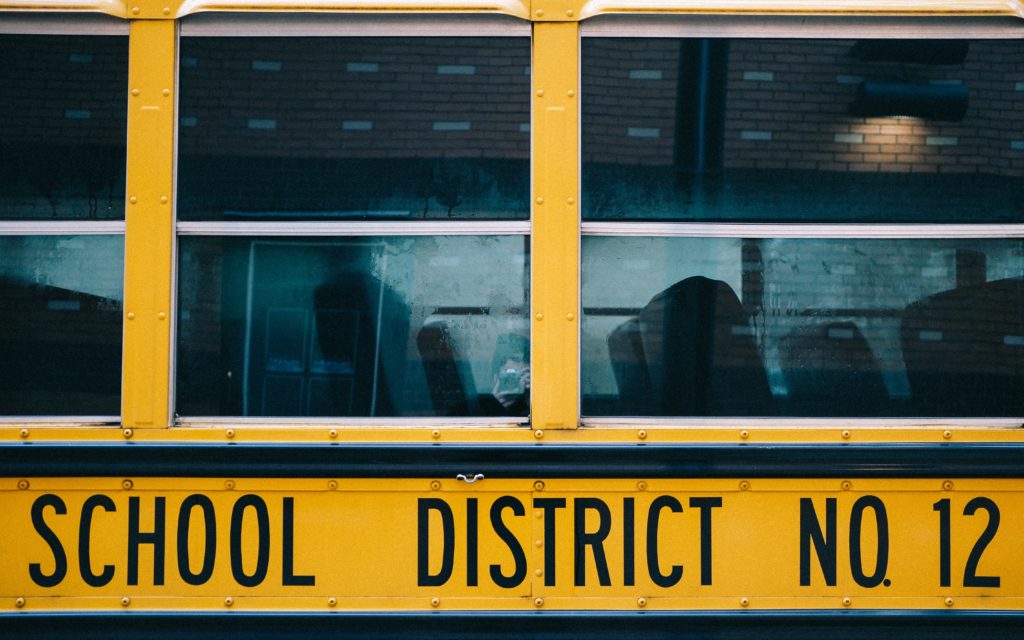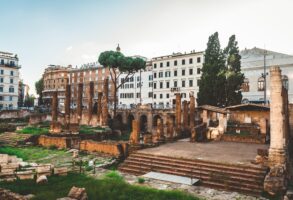
Published October 24, 2022
Let’s face it, Democrats are very good at what they do. No, not governing. I mean what they actually do. Democrats are geniuses at spending your money on things you hate — without your finding out until it’s too late.
The latest Democratic education gambit adds nearly half a billion dollars to President Biden’s fiscal 2023 budget to fund community schools. Does “community schools” ring a bell? I didn’t think so. Few Americans know what community schools are. When first explained, the idea may even sound harmless. In reality, unfortunately, more community schools will mean a whole lot more critical race theory — not to mention more school-sponsored leftist political activism. By what sleight-of-hand do Democrats manage to cram so much mischief into so seemingly innocent a package? Let’s see.
Progressives and teachers’ unions favor community schools as a remedy for low educational achievement in impoverished urban neighborhoods. The idea is for schools to offer an array of services that children in poor communities will not likely get at home: health care, mental-health support, nutritional help, violence-prevention programs, tutoring, etc. If schools can provide what impoverished families cannot, it is claimed, the achievement gap between poor minority students and the middle class just might shrink.
Progressives hope to convert as many low-performing public schools as possible into community schools. They see this as a way to block conservative attempts to create alternatives to poorly performing public schools via charters, choice, and competition for enrollment based on a school’s academic performance as measured by tests. Unions especially love community schools because they prevent teachers at low-performing public schools from experiencing consequences for meager academic results. Conservatives, on the other hand, are suspicious of community schools precisely because they de-emphasize academics in favor of social services. At their worst, as we’ll see below, community schools substitute progressive political indoctrination for academics. Teachers give up on excellence, and progressives get an army of student converts to boot.
Another problem: Community-school counselors and social workers, trained at woke universities in the latest leftist nostrums, find it easier to impose their ideology on families via community schools. When the community-schools idea gained traction back in the Obama years, conservatives worried that ideologically tinged school-based social services would undercut the authority of parents. With the emergence of the battle over transgenderism, that concern is now greater still. Even at ordinary schools, parents are in danger of having teachers talk their children into “gender transition” behind their backs. Parental resistance becomes that much more difficult when school itself is your neighborhood’s medical and therapeutic hub.
These downsides are in no way apparent when you hear talk about community schools. On the contrary, “wraparound social services for poor communities” sounds promising. And some research does show positive results from community schools on measures like attendance and graduation rates. On the other hand, according to the best study we have of community schools, academic performance was only slightly improved, even with substantially increased academic funding and extended instructional time. And even the behavioral improvements measured by that study tend to trail off in high school. These modest results come at huge financial cost, moreover. Professional social services aren’t cheap.
Squabbles over such research results notwithstanding, what most advocates decidedly do not want to talk about is the ideological side of community schools. And hoo boy, there is one.
From the early years of the Obama administration to 2021, the federal government has spent between $5 million and $17 million a year on community schools. The Biden administration upped that amount to $68 million for fiscal year 2022 and now proposes a massive increase to $468 million for fiscal year 2023.
Hannah Grossman of Fox News Digital first noticed this increase, after which she discovered that many community schools incorporate CRT-based concepts like “culturally relevant” pedagogy and “restorative justice.” When Fox asked Biden’s Department of Education whether the administration’s community-schools program would advance CRT, DOE dismissed the inquiry as a “baseless and blatantly political attack.” Exactly what about the question was “baseless” and “blatantly political?” asked Fox. No reply was forthcoming from DOE. When Fox questioned the White House about the link between CRT and community schools, they simply replied, “This is not true,” without further explanation.
Well, it is true. The Biden White House is not being honest here. The community-schools movement is pervaded by CRT, and other politicized pedagogies as well. The problem for critics is that the connection between community schools and CRT is subterranean. At least when addressing the general public, advocates of community schools highlight “wraparound” social services, while conveniently failing to mention the leftist politics. Why risk losing public support? And the trend toward secrecy seems to work. Biden’s stonewalling and denials meant that Fox could only say that millions of federal dollars would be going to a program with “questionable ties to critical race theory.” The vagueness of the link between community schools and CRT may explain why few have picked up on this issue. By drilling down a bit further, however, we can see how Biden’s massive increase in support for community schools will mean a huge increase in federal support for CRT.
The literature on community schools is chockfull of vague bureaucratic jargon. Community schools provide “a spectrum of engagement opportunities,” like “partnering with community organizations,” that result in “learning outside of schools.” What exactly does all of that mean? Well, sometimes it means schools partnering with local hospitals, thereby allowing students to observe medical professionals at work. That’s what they want you to imagine. Just as often, however, “community partnerships” mean hooking a school up to some Alinsky-style, progressive community organization bent on drawing students into its protests. The vague bureaucratic jargon serves to obscure these politicized collaborations.
New York City has seen the most extensive experiment with community schools to date, and the program was very much a project of the city’s leftist community organizations (in partnership with teachers’ unions). These groups pressed a plan for community schools onto mayoral candidate Bill de Blasio in 2012. When de Blasio won, New York’s community organizers were sitting pretty.
You can read about how it all played out in a 2020 article by Julia Daniel et al., “A Step Closer to Racial Equity: Towards a Culturally Sustaining Model for Community Schools.” The article is a case study of a South Bronx community school to which Daniel and her co-authors give the pseudonym Truth High School (THS). Daniel, a leading scholar of community schools, holds THS up as a model of social-justice advocacy.
Daniel and her co-authors build their argument around the work of Gloria Ladson-Billings, the mother of CRT in education, and on the work of a panoply of other far-left writers and education theorists, from Bettina Love (whose CRT-based work was promoted by Biden’s DOE, until they got caught) to Robin D. G. Kelley (whose ultra-radical version of “black Marxism” pervades the College Board’s pilot AP African American Studies program), to a great many other similar writers.
Daniel et al. say they are grounding their analysis of the South Bronx community school in “critical Black traditions of liberation in education,” traditions that exist “outside the white gaze” and push beyond merely “liberal” conceptions of democracy and justice. Daniel and her collaborators want us to remain mindful that America, “constructed on stolen land,” is a system “founded to enact injustice,” a system of “settler colonialism, white supremacy, and antiblackness.” Yet America’s evils can be overcome, we’re told, by partnerships between community schools and community organizations (the Alinskyite political kind, not a local hospital or charity for the needy). Having laid this groundwork, Daniel et al. turn to their case study of Truth High School.
Under the de Blasio administration, THS was a radical community organizer’s dream. Essentially, students at THS were encouraged to join a local community organization, participate in its political advocacy, then work with teachers to shape a curriculum that fed their political views to other students. Daniel and her co-authors explain that the partnership between THS and a local leftist group was “mutually beneficial for school and organization.” I’ll bet! The head of the local Alinskyite group couldn’t stop gushing to the authors about how thoroughly “community schools” had simplified her efforts at student recruitment.
After signing up with the local “Community Justice Collective,” THS students worked with teachers to design a curriculum inspired by their protests against federal immigration policy. The students staged a “Night of Resistance” against supposedly xenophobic (i.e., conservative) views on immigration. Then in class, “students were encouraged to challenge the dominant narratives of white supremacy such as the myths of meritocracy and the American Dream.”
Many THS students were from Honduras. When their essays suggested that Honduras was a violent place, unlikely to change anytime soon, the teacher was alarmed. She quickly redesigned her curriculum to pin the blame for Honduras’s social chaos on American corporations and American foreign policy. If you object that all this foists a political view onto students who ought to remain free to make up their own minds, Daniel et al. have a reply. They tell us that “the site of healing and hope . . . is not principled upon the individual body, but is constitutive of the collective.” In other words, politics should be played out by ethnic and racial communities. Individual freedom is just another American myth.
It’s true that THS practices a strong form of politicized education that not every community school will match. On the other hand, THS is by no means alone. And since the George Floyd protests and riots, THS pre-2020 is looking more and more like a harbinger of community schooling’s current direction.
One factor that only seems to mark THS as exceptional is its membership in a consortium of chronically low-performing schools in New York. In 1998, those schools were granted a variance from the state that excused their students from taking the state Regents exam, which allowed for comparison of student performance against objective criteria as well as against students in other schools. This allowed THS to shift its performance assessments to vaguely defined student “portfolios” and “action projects” — like political protests and so-called service-learning with Alinskyite groups. Yet just last year, Illinois adopted CRT-based teaching standards that encourage the substitution of “social justice work” and “action civics projects” for traditional grades and tests. THS isn’t such an outlier any more.
The Boston public-school system recently adopted a community-schools program (called “Community Hub Schools”) premised on “critical pedagogy” and “antiracist” education. Both terms are essentially synonyms for CRT. If you doubt this, check out the Boston Public Schools’ anti-racism resource page. That page links through to recommendations of core CRT texts from Robin DiAngelo, Ibram X. Kendi, Bettina Love, and many more. Love’s CRT book (which I discuss here) is quoted on the Boston Community Hub Schools’ homepage. Importantly, Biden’s Department of Education touts Boston’s CRT-aligned Community Hub Schools as a model for the nation, via a video on DOE’s YouTube channel.
More important, this past summer Biden’s DOE finalized a rule governing federal grants for community schools. That rule essentially gives CRT-based proposals a huge competitive advantage over non-CRT proposals. Biden’s rule lists two “competitive preference priorities” for community-schools grants. First, grants are favored if they focus on the needs of “underserved” students, defined as students who are poor, of color, migrants, LGBTQ+, undocumented, formerly incarcerated, etc. (See page 41696 for full definition.) I’ve argued elsewhere that both current education dogma and Biden-administration policy hold that “underserved” students are best educated via CRT-based programs.
And in fact, the Biden rule’s first competitive preference makes a similar point. The first preference priority goes on to state that community-school proposals will have an advantage if they are “identity safe and inclusive with regard to race, ethnicity, culture, language, and disability status.” Naïve folks might think programs that simply refrain from discrimination will be counted as “identity safe.” Unfortunately, Biden’s DOE embraces the new orthodoxy, by which only programs explicitly tailored to different identities are “identity safe.” Those anti-racism resources at Boston’s public schools, for example, are divided into three categories: Resources for Black and Indigenous People of Color, Resources for Non-Black People of Color, and Resources for White People. This sort of ethnic and racial tailoring is what “identity safe” now means. Thus, Biden’s new rule ensures that only CRT-friendly proposals will have a competitive advantage.
The first competitive priority also says that applicants must avoid “deficit-based approaches.” Translated from ed-speak, this means that judging students by traditional academic standards is out. Funded schools will have to use “asset-based approaches” instead. That means schools must teach by utilizing knowledge that students already have (their “assets”). Sponsoring political protests in which immigrant students recount their experiences crossing the border, as Truth High School did, is an asset-based approach to learning. This means that Truth High School’s abandonment of traditional academic standards will increasingly become the norm.
Biden’s second competitive preference priority for federal grants to community schools goes to proposals that offer “community engagement to advance systemic change” for underserved students. Exactly what that means isn’t spelled out, but it’s easy to see how Biden’s DOE can use this criterion to favor grants linking schools to local Alinsky-style community organizations. Truth High School’s politicized programs fit this criterion to perfection.
All this means that whatever “wraparound” medical and psychiatric services may be involved, Biden’s community-schools program will heavily fund CRT and leftist political activism. So, regardless of how much funding Congress ultimately allocates to community schools in the lame-duck session to come, here is what we know. The Biden administration and congressional Democrats will do everything in their power to push CRT into America’s public schools.
I have argued repeatedly that the Civics Secures Democracy Act (CSDA) — a bill foolishly signed onto by a small number of naïve Republicans — will be used by Biden’s DOE to force CRT into every state and school district in America. This will happen if CSDA passes during the lame duck, whether Republicans win the midterms or not. Biden and the Democrats love CRT, and they know how to impose it sneakily by using bureaucratic tools like “competitive preference priorities” and terms like “underserved.” The tricks I’ve shown that Biden’s DOE will use to fund CRT via the civics bill have just been deployed by DOE in its rule for funding community schools. So beware.
Republican elected leaders need to wake up and stop being fooled by superficially appealing proposals like community schools and “civics” (actually anti-civic CRT). Saying yes to the Democratic education agenda isn’t welcome bipartisanship. It’s cultural and political suicide.
Stanley Kurtz is a Senior Fellow at the Ethics and Public Policy Center. Beyond his work with Education and American Ideals, Mr. Kurtz is a key contributor to American public debates on a wide range of issues from K-12 and higher education reform, to the challenges of democratization abroad, to urban-suburban policies, to the shaping of the American left’s agenda. Mr. Kurtz has written on these and other issues for various journals, particularly National Review Online (where he is a contributing editor).
Stanley Kurtz is a Senior Fellow at the Ethics and Public Policy Center. Beyond his work with Education and American Ideals, Mr. Kurtz is a key contributor to American public debates on a wide range of issues from K–12 and higher education reform, to the challenges of democratization abroad, to urban-suburban policies, to the shaping of the American left’s agenda. Mr. Kurtz has written on these and other issues for various journals, particularly National Review Online (where he is a contributing editor).








